Deathbed farewell: Inside the Chambersburg Mall, a haunting visit to a shopping center in its final days
I paid a farewell visit to this Pennsylvania mall when it was all but dead. The death certificate will be signed, if you will, on Friday.
I stumbled upon the Chambersburg Mall in March 2019, when I visited Black Rose Antiques & Collectibles, which had moved into the site of the now-closed Sears, one of once four retail anchors at the mall.
Feeling the urge to go thrifting during the trip, I turned up the Black Rose during a Google search and was shocked to find it was one of the final businesses in a massive brutalist landscape — 500,000 square feet in all — that is the Chambersburg Mall, which sits just outside the Pennsylvania city by that name.

Back in April, the AMC Classic theater closed after 39 years, and that left the Black Rose as the last store standing. The Black Rose location will wilt forever on Friday, June 30, shutting down after an eight-year run. It will open one last time at 10 a.m. and close at 2 p.m. And with that, presumably and now officially, the mall itself will be dead. (Indeed, a reader informed me the owner, Namdar Realty Group, has put up signs announcing the mall is closed.) Though it has been closed for all practical reasons (like, say, shopping) for a long time.
It’s a sad end to the mall whose soft launch on Feb. 28, 1982, set off a shopper frenzy, tying up traffic on Interstate 81 in this community about 50 miles southwest of the state capital of Harrisburg. In addition to hosting anchor stores like J.C. Penney and Hess’s over the years, the mall was home to around 75 individual businesses at its peak
But registers hadn’t been ringing melodiously for years, and as early as July 2009, the mall was listed as one of America’s most endangered in a report by U.S. News & World Report, with a 62 percent occupancy rate, according to the magazine’s analysis.
At the time, the mall steadfastly denied it was in a lethal tailspin, but it had accepted a discounter (in this case, Burlington Coat Factory) to serve as an anchor, typically a sign of mall weakness, a point underscored by U.S. News.
Despite presenting a rosy picture at the time, the team running the mall — and subsequent managers who stepped in — could not prevent the decline. In 2019, Burlington (by then shed of the “Coat Factory” baggage) exited, leaving the flea market as the last hope for the mall. Talk of Rural King, the farm and home store, moving in never materialized.

When I returned to the Chambersburg Mall on April 20 of this year, there was still one accessible wing, even though all the stores were closed inside of it.
When I arrived, I first tried to enter on the other side of the mall, but that portion was already permanently locked down. That’s where I got “the treatment” from a suspicious security guard. When I tried to enter on the other side of the mall, next to Black Rose, I was allowed to enter — the same security guard gave me a pass this time — and it was a beautiful, sad, and haunting experience to explore those forlorn halls.
It was beautiful in that the mall was lit only by natural light from its skylights, and they cast warm spotlights through the darkened corridors. The entrance to the defunct Bon-Ton, with a tall, healthy ficus tree and a prominently positioned wooden bench, was a lovely tableau, a dignified pose in the face of certain death.
The mall, you see, had been reduced to its bare essence.
A March 1982 Public Opinion newspaper article published shortly after the mall opened described the design as seeking to evoke a “natural setting,” with those skylights, plant life, earth-tone decor and wood-seating areas. That’s exactly what I still saw, standing all alone in this mall, 41 years later. It was like 1982 again, right before the opening day, except the next big milestone was closing day.
There were the unmistakable scars of familiar retail denizens like Bath & Body Works. The wood-paneled facade with a row of green lamposts and the checkered awnings — a decidedly 1990s design — has become a totem of the dead mall, a sign that time has passed this place.
Near the entrance was the label scar for a former Bonanza steakhouse, emblazoned on delicious, perpendicularly arranged wood paneling. That location had left the dying mall and is now located nearby
And that was it, my quick visit was over. I thought of trying to push deeper into the mall, but it was a little spooky and not a little sad. It’s a story, of course, that’s been playing out from coast to coast, a story that is far from over.
That the Chambersburg Mall is dead is a certainty. But what could profitably be done now to put all that acreage to good use? Farmland and orchards were paved over to build the Chambersburg Mall, and it’s tempting to contemplate that returning to dust might be this land’s best chance at being useful again.
What do you think will — and perhaps most importantly should — happen here?
Thank you for reading! The Retrologist is a reader-supported publication. Please consider subscribing and upgrading to paid status as a show of support for my work. Thank you!





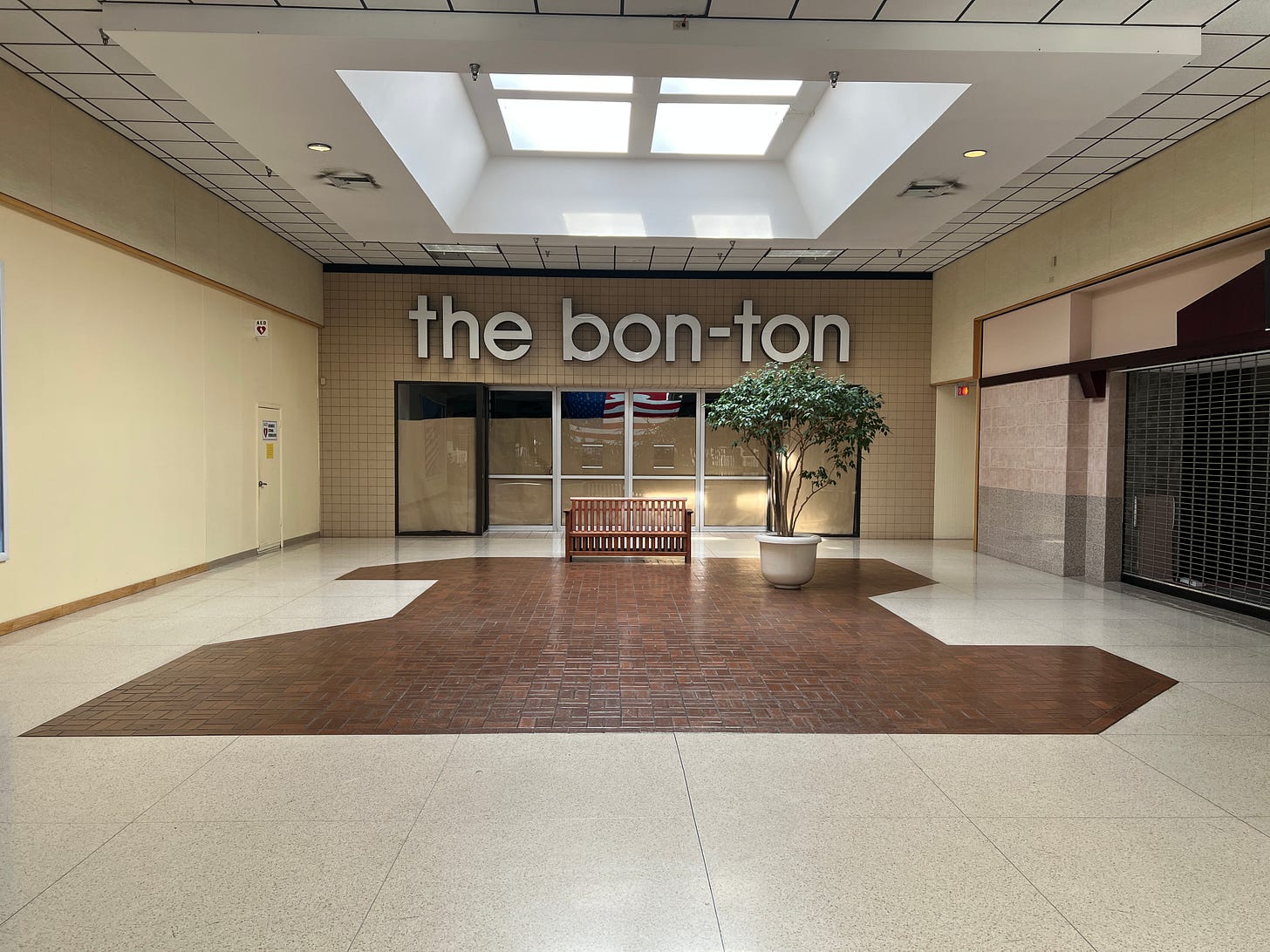
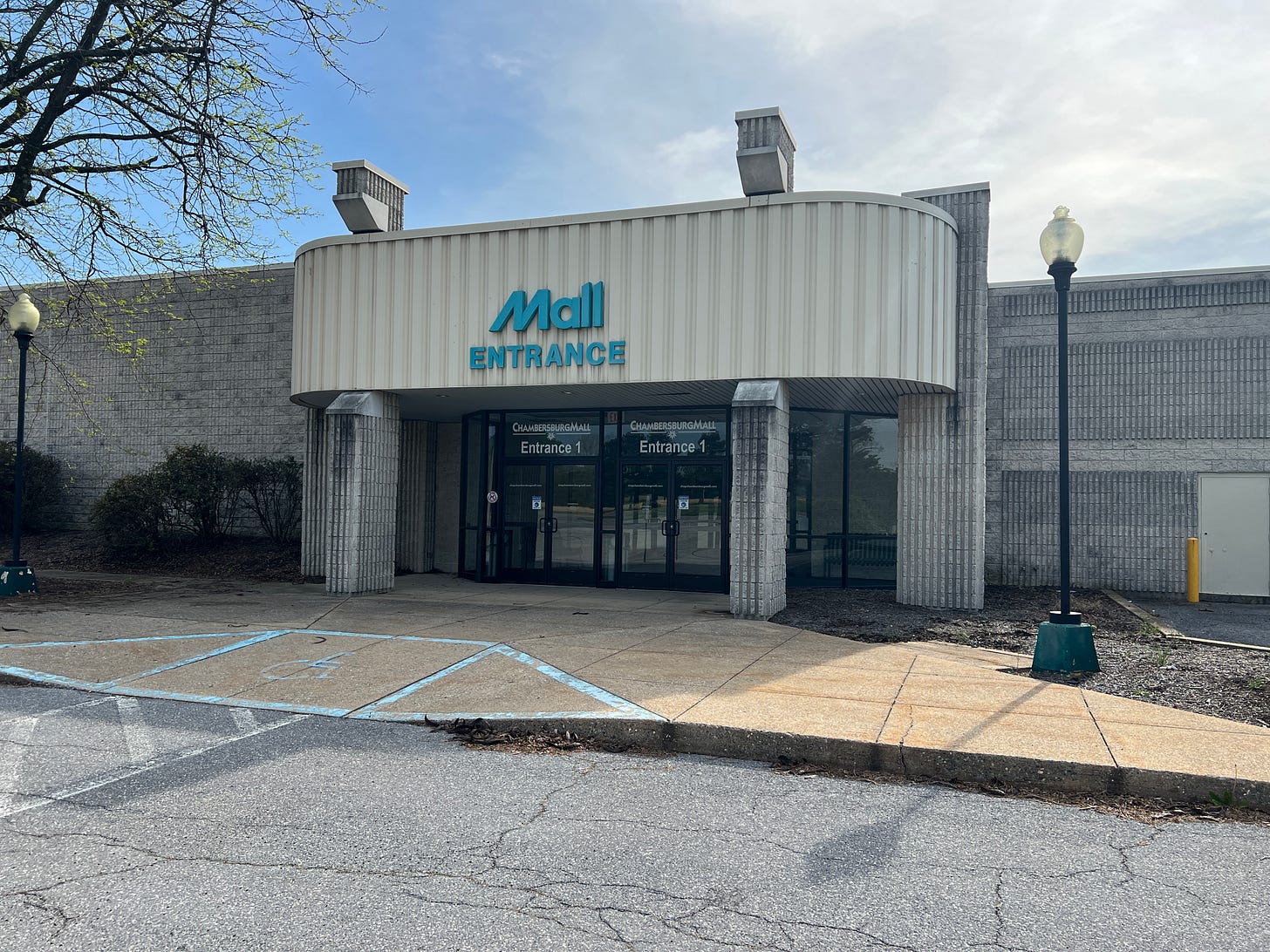
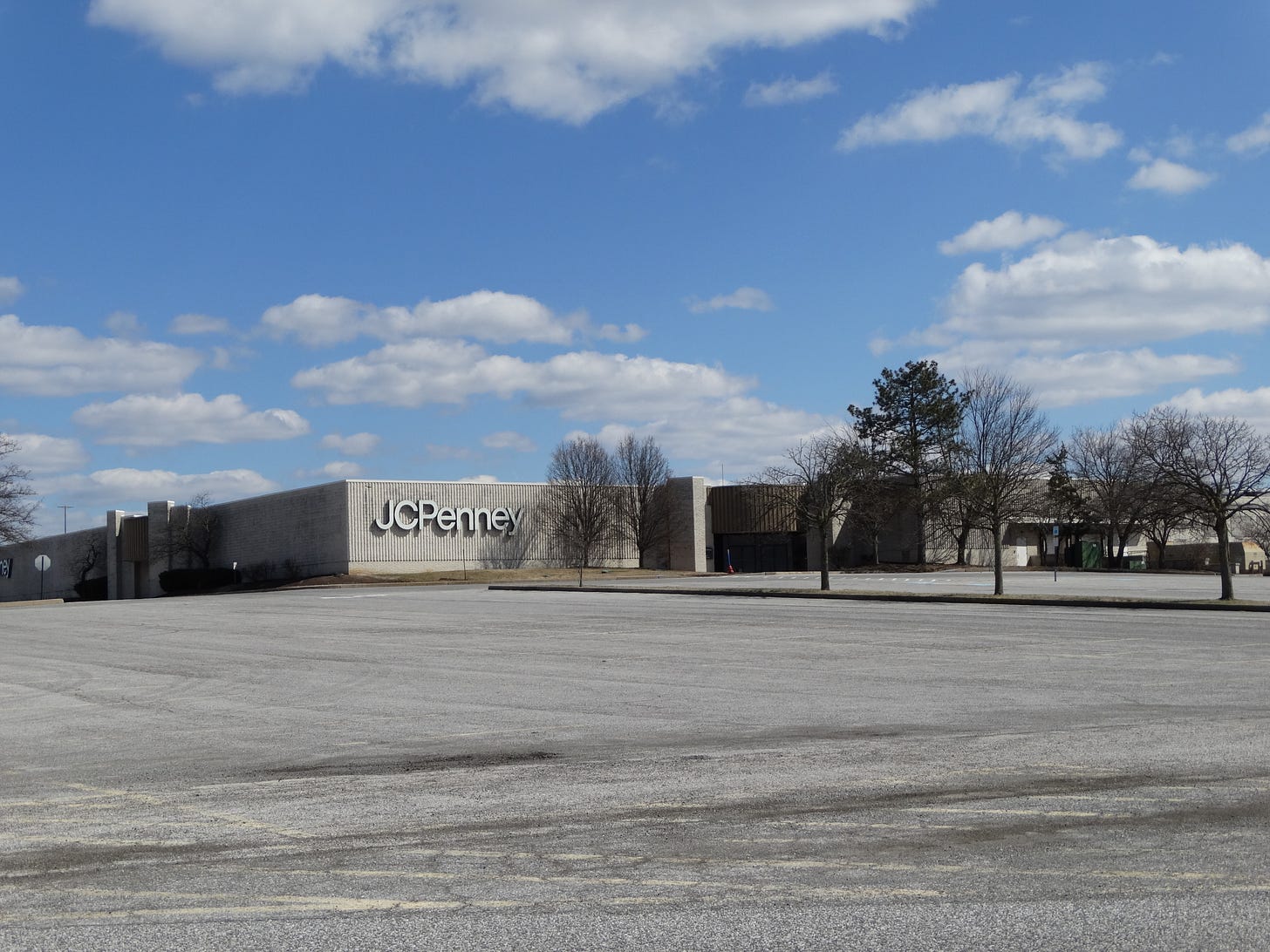
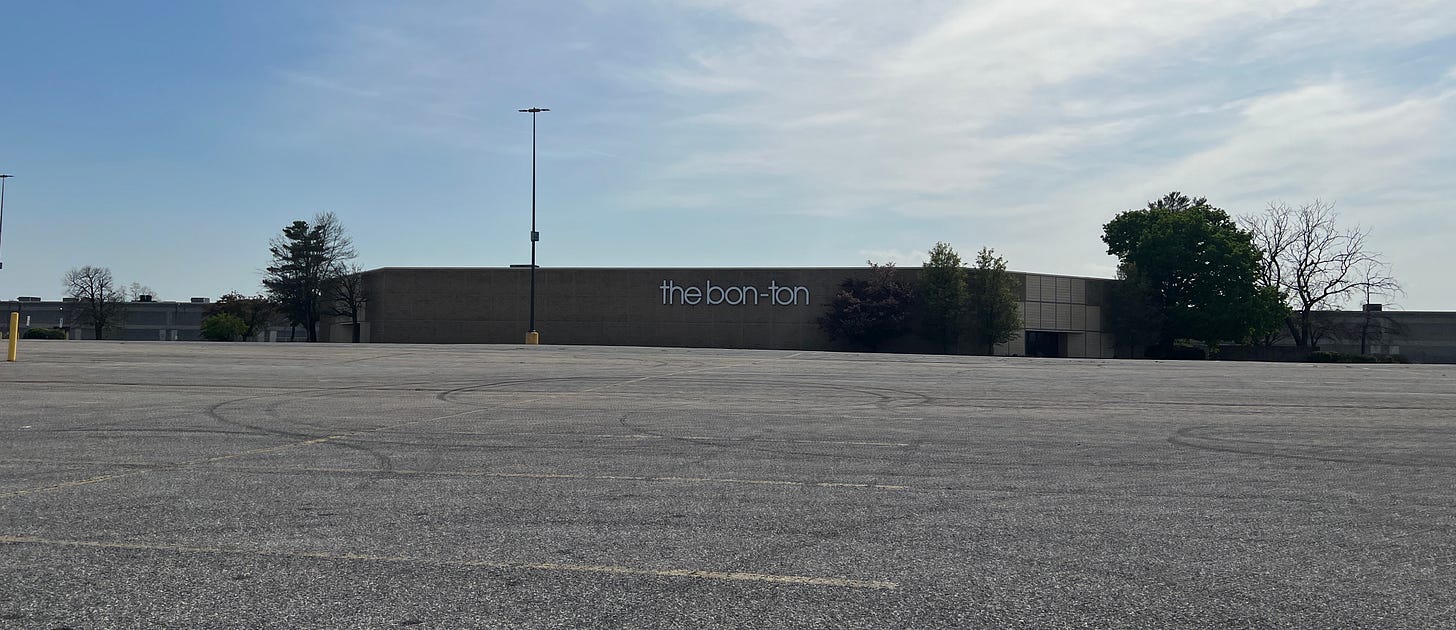
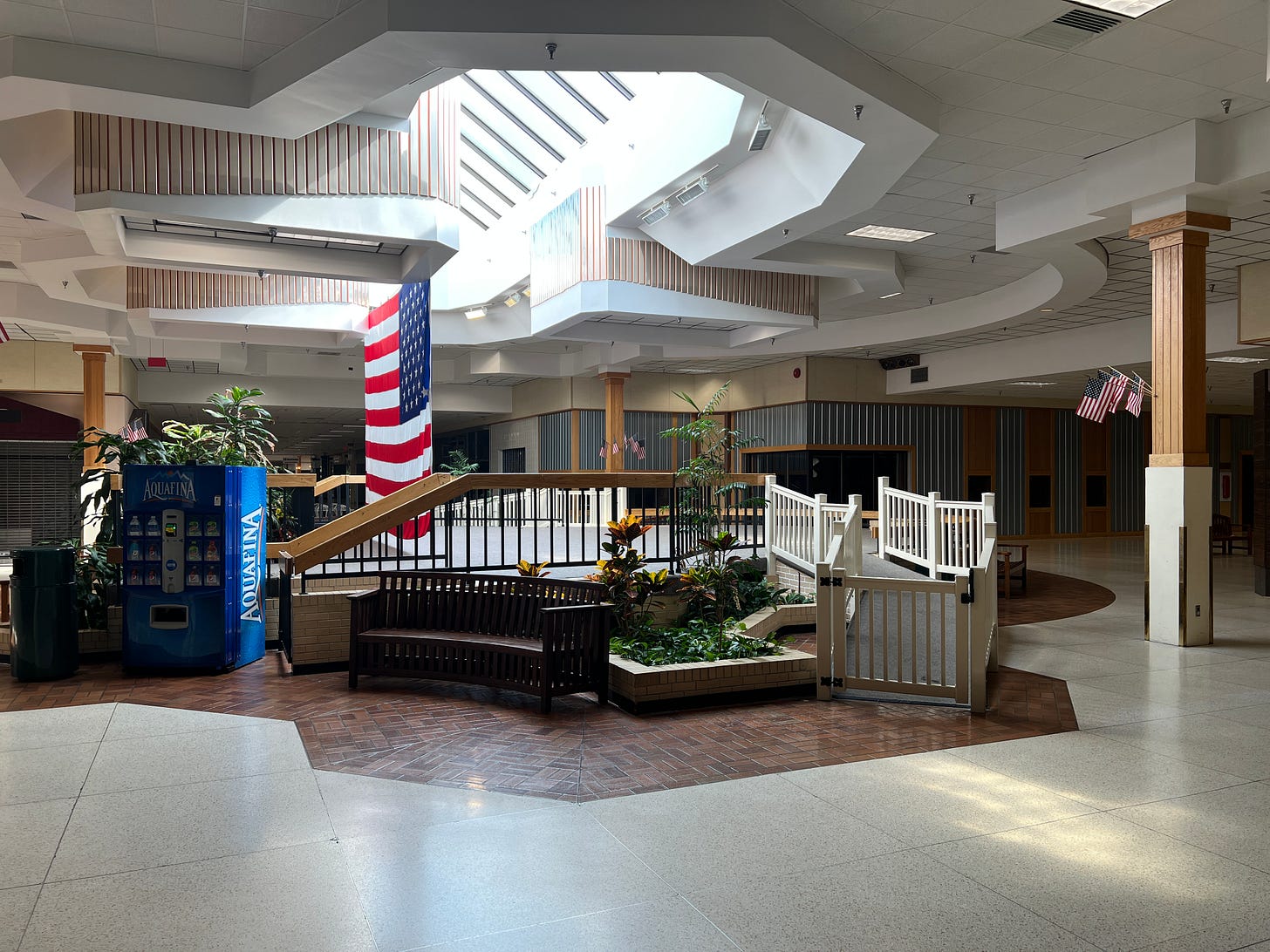
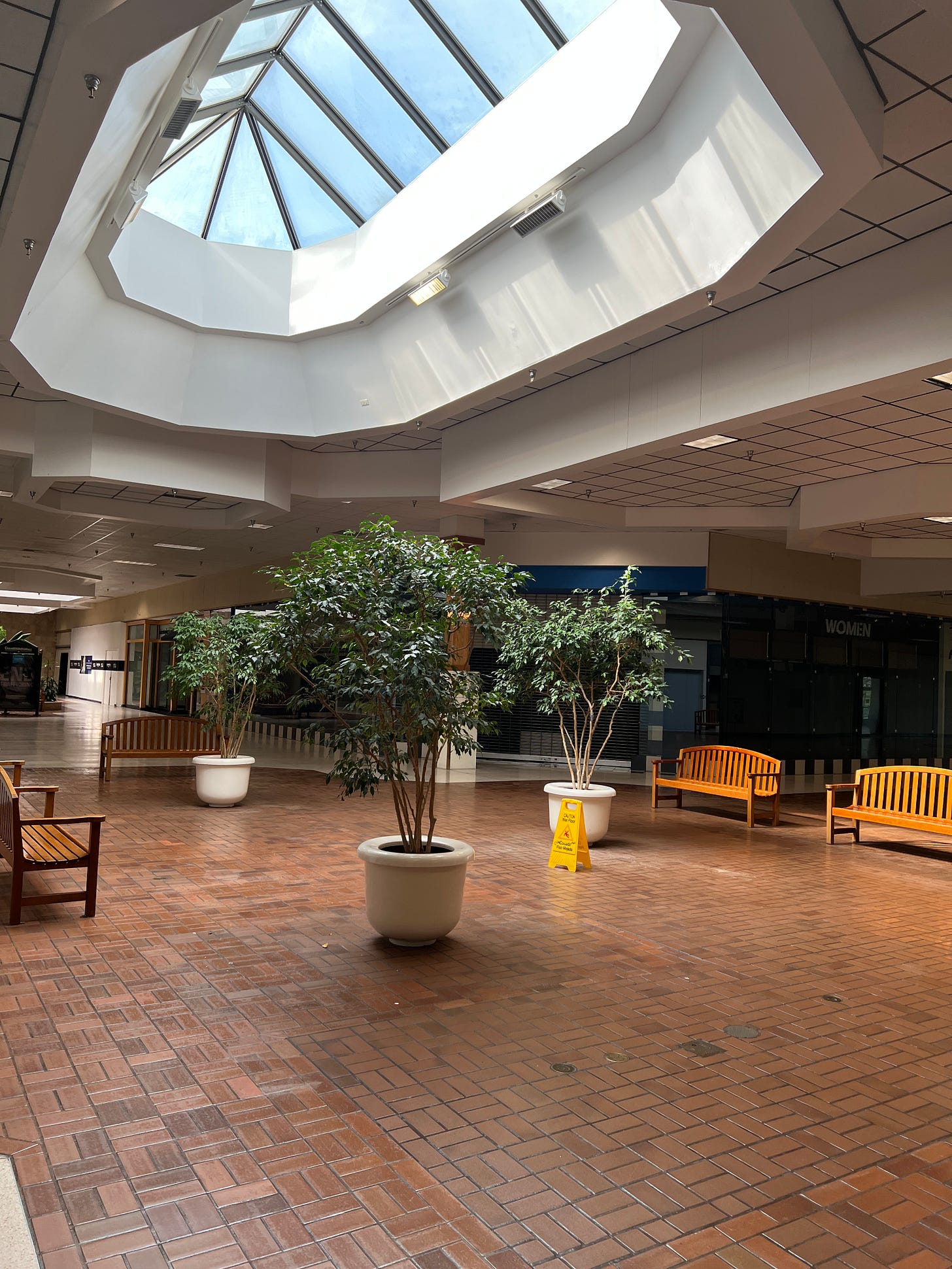
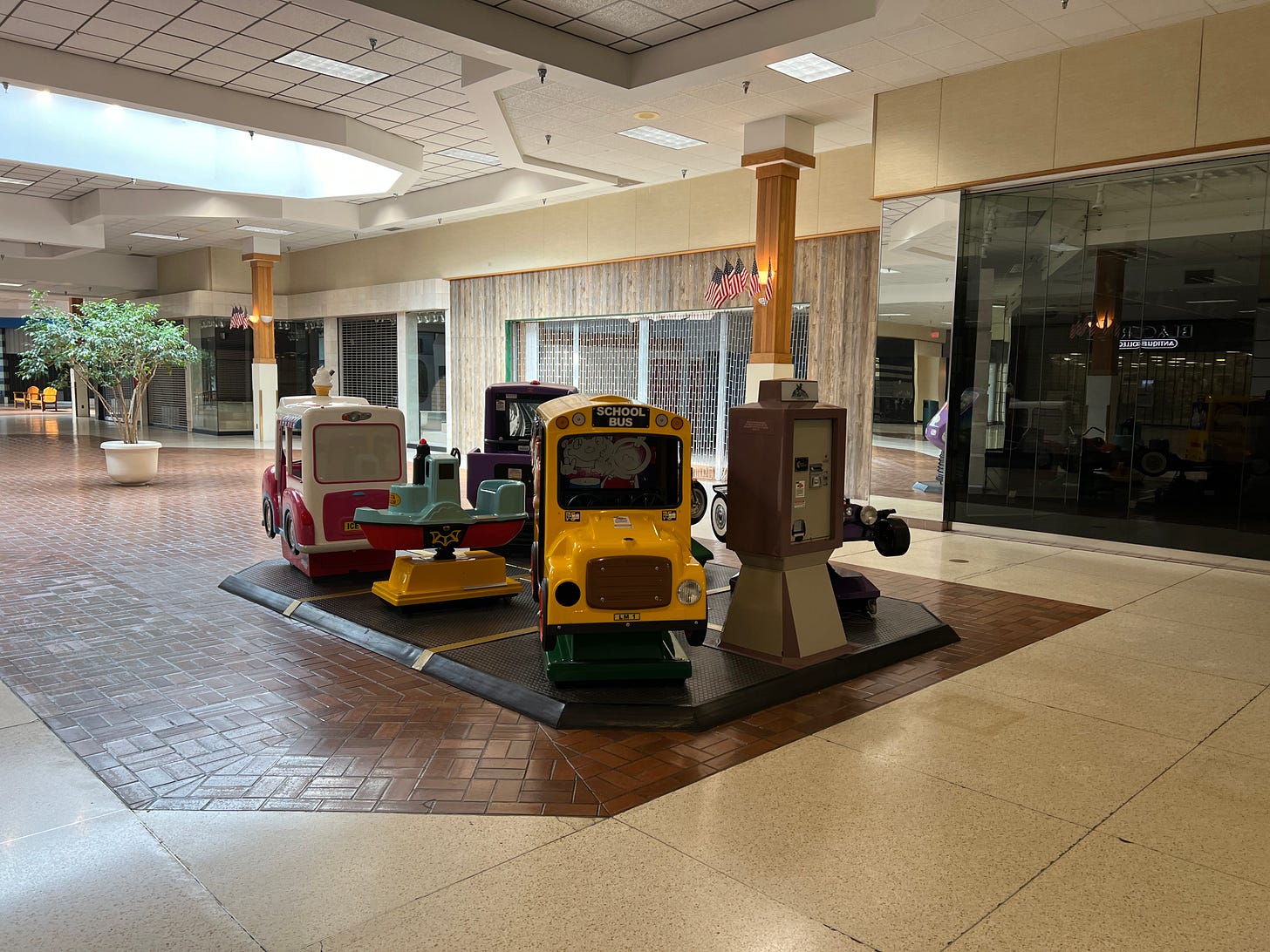
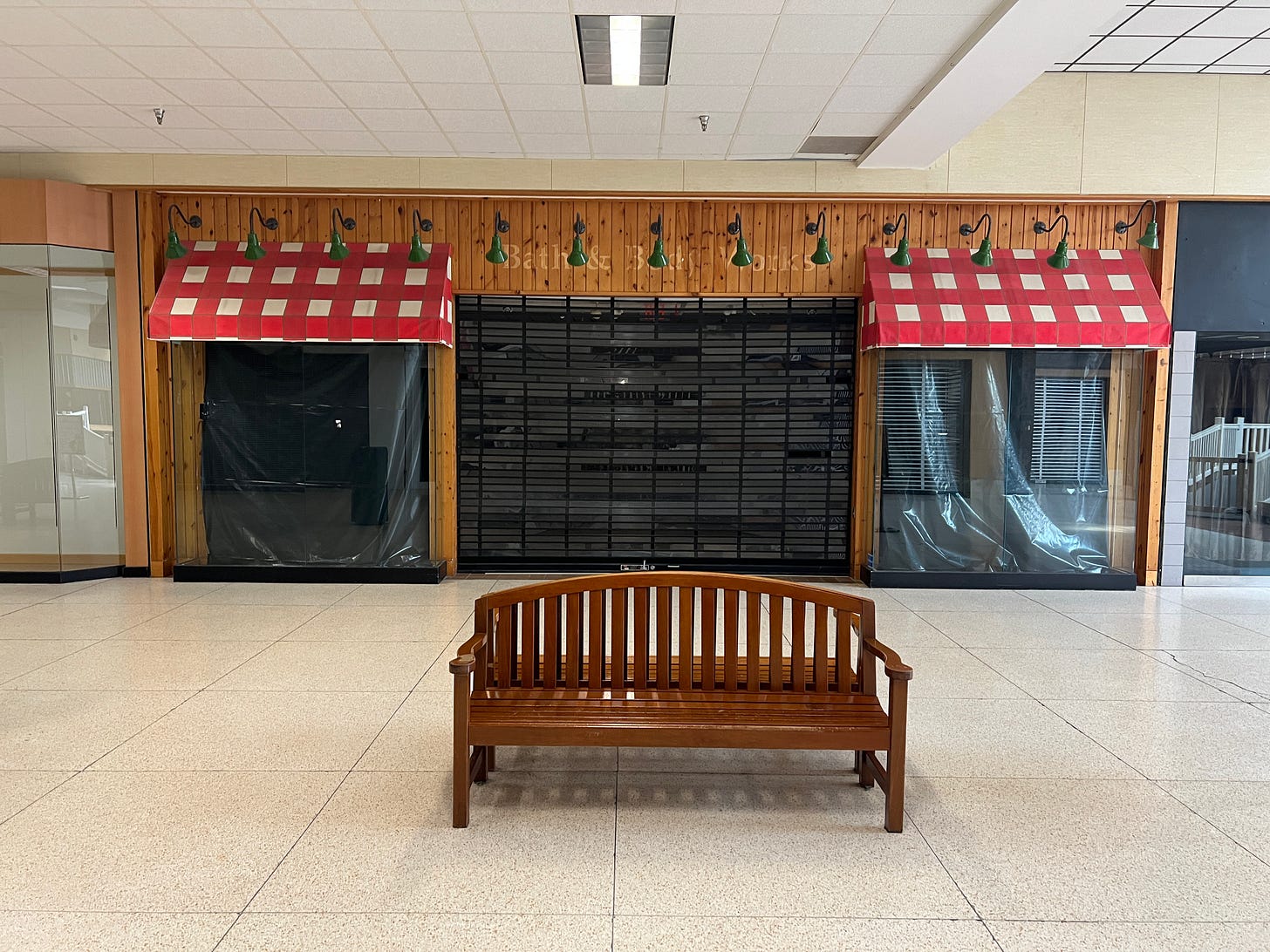
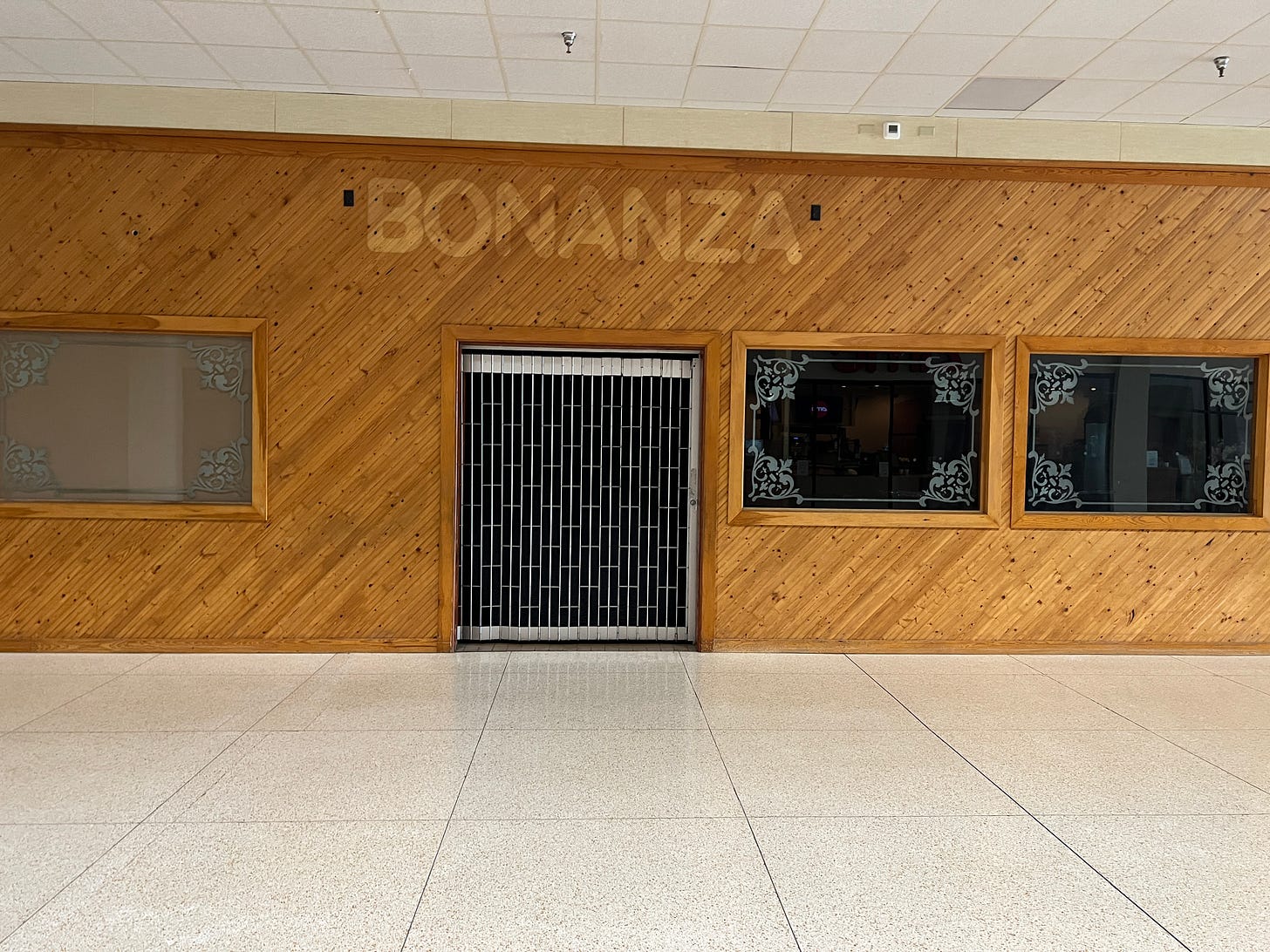
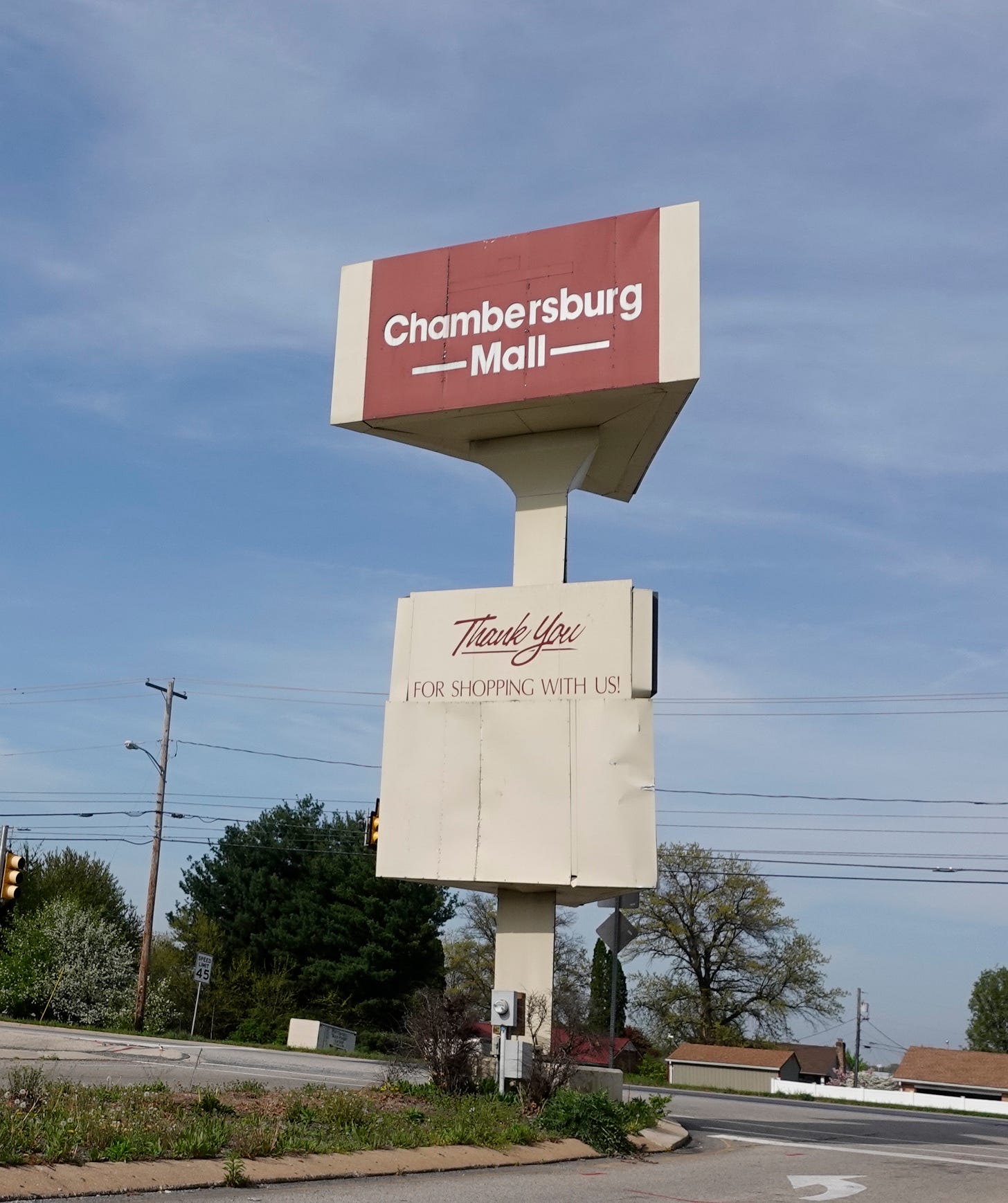
Maybe the location should be smart growth or new urbanism ? I walkable downtown with ground floor retail and upper floor residential. The parking hidden behind the buildings. At least an improved property with more grass and trees.
Mr. Pujol, another outstanding piece! It’s impossible not to admire your ability to find beauty in places most people would drive by without a second thought.